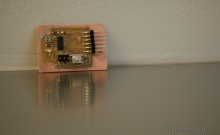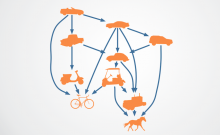Buckeye Imagery Viewer

Acknowledgements
Mike Tischler for inventing the original BIG, Mike Hardaway for being understanding while I took 25 credits, Andrew Jenkins for his subject matter expertise, Vineet Gupta for being a great branch chief and Dr. Eric Zimmerman for being a great mentor through my entire career.
Press Coverage
Defense Department
Space Daily
Gov Pro
Geospatial Solutions
SATNews
GIS Cafe
Project Awards
Best Invention - US Army 2006
Geospatial Intelligence Achievement Award - GEOINT 2006
Related Links
Buckeye Imagery (CAC Required)
US Army Geospatial Center (The Agency Controlling Buckeye)
“The first rule of technology is that automation applied to an efficient operation will magnify the efficiency.”
- Bill Gates
The average soldier has a secret clearance, but most of the high resolution imagery requires a top-secret/SCI clearance to even view. In 2004, the BuckEye system was born out of the need for unclassified high-resolution geospatial data. BuckEye began as a helicopter-mounted digital color camera system that produced high-resolution imagery using commercial, off-the-shelf parts, but quickly was transitioned to fixed wing aircraft.
The BuckEye Image Viewer (BIG) allow anybody to access terabytes of high-resolution BuckEye aerial photography over their area of interest (AOI) using any modern web browser. When images are collected, a series of digital photographs are taken along with associated metadata. This data can then be combined within a web interface so users can quickly find the images they need.
BIG, conceived by Michael Tischler, became immensely popular due to limited bandwidth overseas. When a forward operating base (FOB) needs imagery for their specific AOI, it’s often more economical to put the images on a hard drive (HD) and physically fly that HD to their FOB. Within an hour, terabytes of imagery can be accessed from anywhere in-country.
What I did
During my senior summer internship, I was tasked with updating the BuckEye Image Viewer, an easy task if it’s 2009. But it isn’t, not in the military. Often it takes several years for new technologies to become approved by the Army and optimal solutions often lie in 2-3 year old technology. I worked on a custom java application to convert the image metadata into an SQLite database. I also began development of a web application, written in Flex, that can read and write from this local database. A few cool hacks later and a user could view individual .jpg images in an interface similar to Google Earth.









